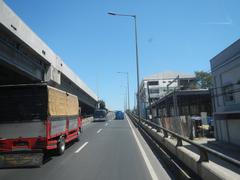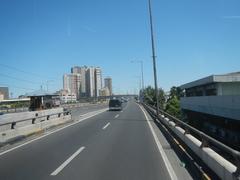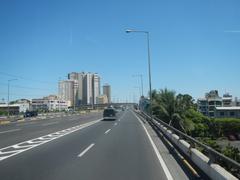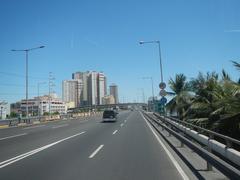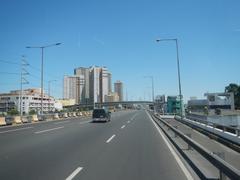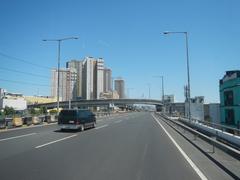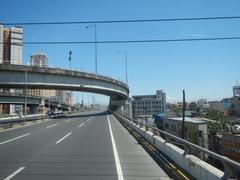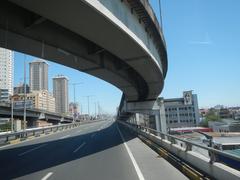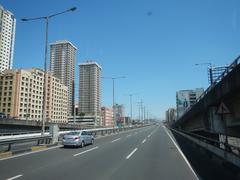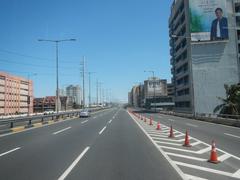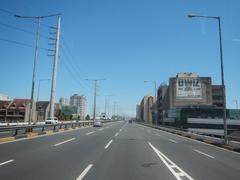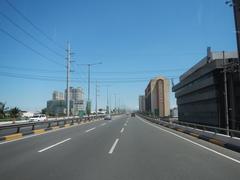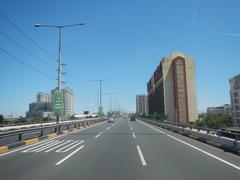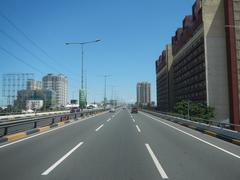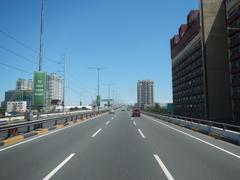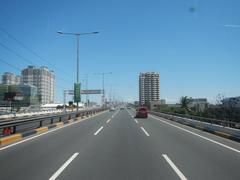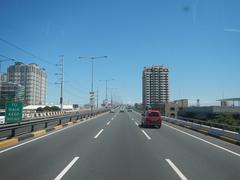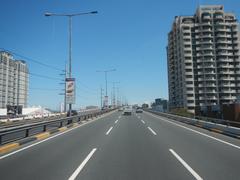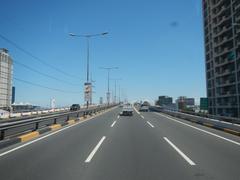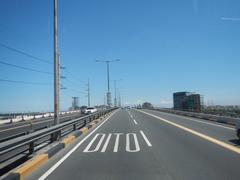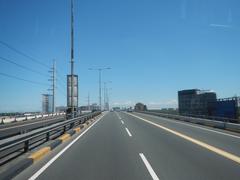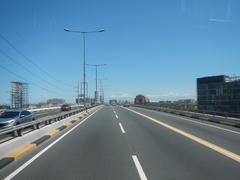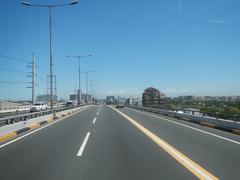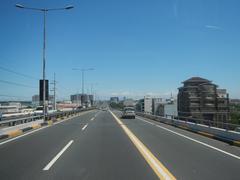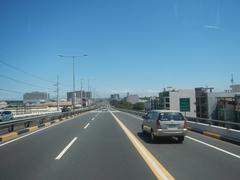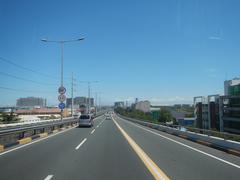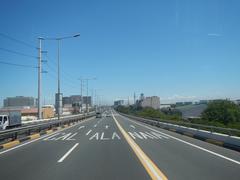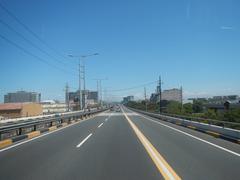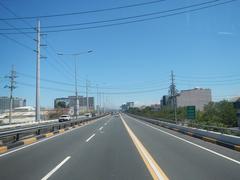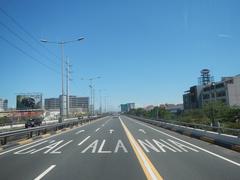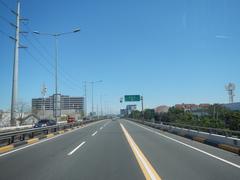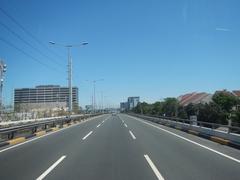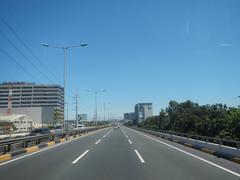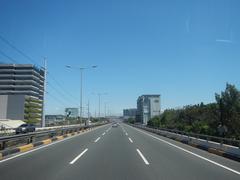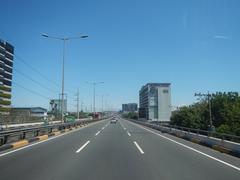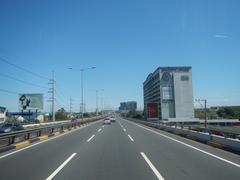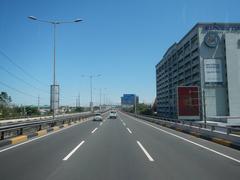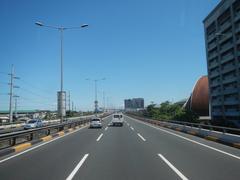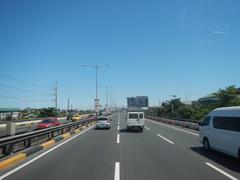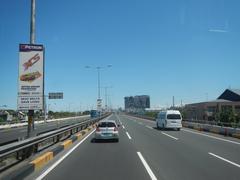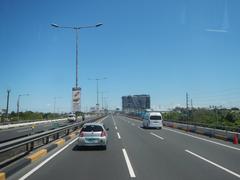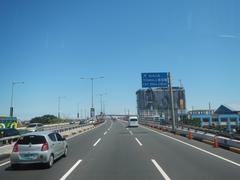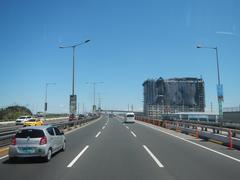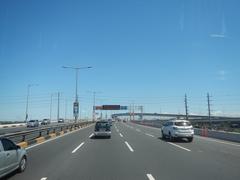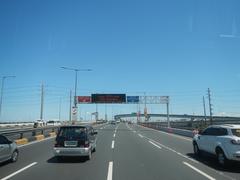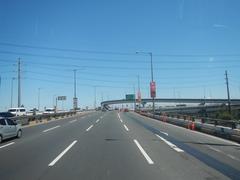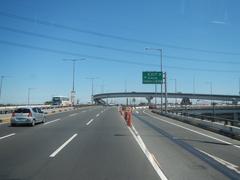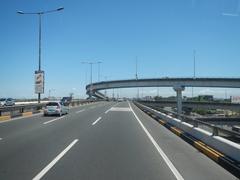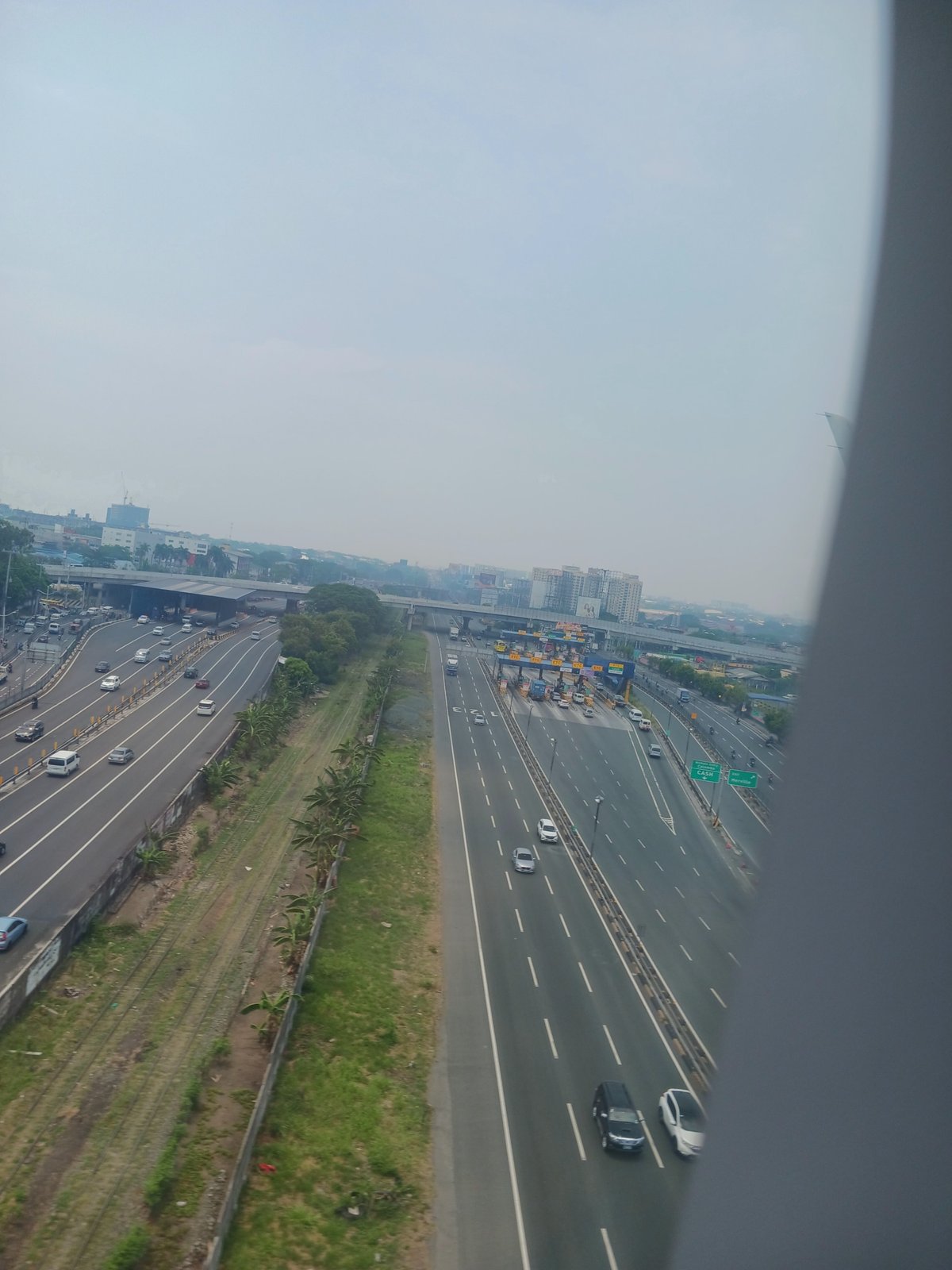
Skyway Metro Manila Visiting Hours, Tickets, and Travel Guide
Date: 14/06/2025
Introduction
The Metro Manila Skyway is a landmark elevated expressway system that has revolutionized urban mobility in the Philippines’ capital. Stretching nearly 43 kilometers, it connects the southern suburbs of Alabang to the northern reaches of Balintawak, linking key economic and cultural hubs. Initiated in the early 1990s as a response to Metro Manila’s chronic traffic congestion, the Skyway has undergone multiple expansion stages to provide efficient north-south travel, integrate seamlessly with other major expressways, and support both daily commuters and tourists.
This comprehensive guide details the Skyway’s history, expansion, operational hours, toll system, travel tips, and its strategic value for visitors accessing nearby attractions like Intramuros and Rizal Park. For real-time updates and authoritative information, refer to the Toll Regulatory Board Skyway Project page and Philippine News Agency.
Table of Contents
- Introduction
- Historical Background and Stages of Expansion
- Visitor Information: Operating Hours, Toll Fees, and Accessibility
- Nearby Attractions and Travel Tips
- Key Milestones and Notable Features
- Ongoing and Future Developments
- Summary Table: Skyway Expansion Stages
- Frequently Asked Questions (FAQs)
- Conclusion
- References
Historical Background and Stages of Expansion
Origins and Rationale
Conceived in the early 1990s, the Metro Manila Skyway was designed to address mounting traffic congestion along the vital Alabang–Makati corridor. As Metro Manila’s rapid urbanization outpaced infrastructure, the Skyway emerged as a flagship public-private partnership under President Fidel V. Ramos, intended to double road capacity, stimulate economic opportunities, and provide a modern, grade-separated expressway (TRB).
Public-Private Partnership and Concession
The Skyway was realized through a Build-Operate-Transfer (BOT) agreement. The Toll Regulatory Board (TRB) granted the concession, with the Philippine National Construction Corporation (PNCC) and Citra Metro Manila Tollways Corporation (CMMTC) as project grantees. Operations are managed by the Skyway Operation and Maintenance Corporation (SOMCO) under a 30-year concession (TRB).
Stages of Expansion
Stage 1: Buendia–Bicutan and SLEX Rehabilitation
- Scope: 9.5 km elevated tollway from Buendia (Makati) to Bicutan (Taguig), plus rehabilitation of the Magallanes–Alabang segment of SLEX.
- Timeline: Started April 1995; partial opening in October 1999 (Crown Asia).
- Impact: Provided a direct, grade-separated route, significantly reducing travel times and congestion.
Stage 2: Bicutan–Alabang Extension
- Scope: 6.88 km extension from Bicutan to Alabang, improving connectivity for southern Metro Manila.
- Timeline: Opened December 2010; Alabang Toll Plaza (2011); extension to Susana Heights (2020) (Crown Asia).
- Impact: Eased traffic in SLEX-Alabang and supported growth in Muntinlupa.
Stage 3: Buendia–Balintawak (NLEX Connector)
- Scope: 18.5 km elevated expressway connecting Buendia (Makati) to Balintawak (Quezon City), linking SLEX and NLEX.
- Timeline: Opened in 2020 (PNA).
- Impact: Reduced travel time between Buendia and Balintawak from two hours to 15–20 minutes, providing a crucial alternative to EDSA.
Stage 4: Metro Manila Tollway (C-6 Corridor, Ongoing)
- Scope: Connecting the Skyway at Bicutan to NLEX in Marilao via the eastern corridor.
- Status: Ongoing right-of-way acquisition and engineering for the Southeast Metro Manila Expressway (C6 Expressway, Phase I) (PNA).
- Impact: Will further decongest Metro Manila and reduce travel time from Bicutan to Batasan.
Visitor Information: Operating Hours, Toll Fees, and Accessibility
Operating Hours
The Metro Manila Skyway operates 24/7, ensuring continuous access for both commuters and commercial vehicles. Maintenance work and advisories may affect certain segments—check official channels or apps for updates.
Toll Rates and Payment
Toll rates vary by vehicle class and distance:
- Class 1 (Cars, SUVs, Vans): PHP 45–300
- Class 2 (Buses/Trucks with two axles): PHP 80–500
- Class 3 (Trucks with three+ axles): PHP 150–800
Payments are primarily through RFID-based electronic toll collection (Autosweep), though cash lanes exist (often with longer waits). RFID installation is free at designated sites, and from March 15, 2025, RFID is mandatory (TRB). For detailed rates, visit the Official Skyway Toll Information page.
Vehicle Access and Restrictions
- Allowed: Cars, vans, SUVs, pick-ups, and motorcycles above 400cc.
- Not Allowed: Buses, trucks, and most public utility vehicles (Island Times).
- Rental Cars: Ensure RFID is installed and loaded; confirm with rental agencies.
Accessibility and Tips
- Use navigation apps for real-time updates and ramp locations.
- Peak hours: 6:00–9:00 AM and 5:00–8:00 PM weekdays.
- Emergency assistance is available 24/7; speed limits are enforced (60–80 km/h).
- For airport access, use NAIAX ramps.
Nearby Attractions and Travel Tips
The Skyway’s strategic exits offer fast access to:
- Intramuros: Manila’s historic walled city, via Balintawak and connecting roads.
- Rizal Park: National hero memorial, accessible from Quirino Avenue exit.
- Makati CBD: Via Buendia and Magallanes exits.
- SM Mall of Asia: Via connected expressways.
Tips:
Plan trips during off-peak hours, preload your RFID, and check for real-time traffic conditions to maximize efficiency.
Key Milestones and Notable Features
- Capacity: Up to 300,000 vehicles daily (TRB).
- Integration: Connects SLEX, NLEX, NAIAX, and future C-6 Expressway.
- Economic Impact: Facilitates logistics, spurs real estate and business growth (Crown Asia).
- Technology: Electronic toll collection, modern traffic management, continuous monitoring.
Ongoing and Future Developments
- NLEX-SLEX Connector Road: 7.7 km elevated link, reducing SLEX-NLEX travel to 20 minutes (PNA).
- Laguna Lakeshore Road Network: 51 km corridor from Calamba to Bicutan.
- Bridge and Interchange Projects: Further connectivity and decongestion.
Summary Table: Skyway Expansion Stages
| Stage | Route/Scope | Length (km) | Key Dates | Status/Impact |
|---|---|---|---|---|
| 1 | Buendia–Bicutan, SLEX Rehab | 9.5 | 1995–1999 | Eased Makati–Alabang congestion |
| 2 | Bicutan–Alabang, Alabang Toll Plaza, Susana Heights | 6.88 | 2010–2020 | Improved southern Metro Manila access |
| 3 | Buendia–Balintawak (NLEX Connector) | 18.5 | 2020 | Direct SLEX–NLEX link, reduced travel times |
| 4 | Bicutan–NLEX Marilao (C-6 Corridor, planned) | 32 (est.) | Ongoing | Future decongestion and expanded connectivity |
Frequently Asked Questions (FAQs)
Q: Does the Skyway have specific visiting hours?
A: The Skyway operates 24/7 for vehicles; it is not a tourist destination but a toll expressway.
Q: How do I pay toll fees?
A: Via RFID (Autosweep) electronic toll collection. Cash is accepted in select lanes.
Q: Which vehicles are allowed?
A: Private vehicles and motorcycles above 400cc; buses, trucks, and most PUVs are not allowed.
Q: What are the busiest hours?
A: 6:00–9:00 AM and 5:00–8:00 PM on weekdays.
Q: Can I access Manila’s attractions via the Skyway?
A: Yes, exits connect to Intramuros, Rizal Park, Makati CBD, and more.
Exploring Intramuros: Manila’s Historic Walled City
Overview
Intramuros is Manila’s iconic walled city, founded in 1571, and was the seat of Spanish colonial rule for over 300 years. Its fortifications, historic churches, and museums provide a window into the Philippines’ colonial past (Official Intramuros Administration website).
Visiting Hours and Tickets
- General access: Free, 8:00 AM–6:00 PM daily.
- Attraction fees:
- Fort Santiago: ₱75 (adults), ₱50 (students/seniors)
- San Agustin Museum: ₱200
- Casa Manila: ₱75
Tickets are available onsite, with guided and combined tours bookable both on-location and online.
Getting There
Intramuros is easily accessible via the Skyway (Balintawak or Quirino exits) and public transport such as jeepneys, buses, taxis, and ride-sharing apps. For those staying nearby, walking is pleasant, though accessibility varies by site.
Activities and Tips
- Join walking, bike, or kalesa tours for historical insights.
- Wear comfortable shoes for cobblestone streets.
- Visit early to avoid crowds and afternoon heat.
- Bring water and sun protection.
Nearby Attractions
- San Agustin Church: Baroque UNESCO World Heritage Site.
- Rizal Park: Urban park and national monument.
- Manila Cathedral: Neo-Romanesque architecture.
FAQs
- Is Intramuros safe? Yes, but remain vigilant.
- Is there a fee to enter Intramuros? No, but attractions charge admission.
- Can I visit at night? Most sites close by 6 PM; some restaurants remain open.
- Are tours available in other languages? Yes, with advance notice.
- Is parking available? Limited; public transport is preferable.
Visuals and Interactive Elements
[Insert images of Fort Santiago, San Agustin Church, and the Intramuros walls with descriptive alt text, e.g., “Fort Santiago entrance in Intramuros, Manila” and “Historic San Agustin Church interior”]
[Embed interactive map of Intramuros highlighting main landmarks and visitor amenities]
Related Articles
Summary and Final Travel Recommendations
The Metro Manila Skyway is a transformative infrastructure achievement, providing fast, reliable, and safe travel across the metropolis while offering strategic connections to Manila’s most treasured historical and cultural sites. For the best experience, secure an RFID tag for toll payments, travel during off-peak hours, and use navigation apps for real-time updates. When exploring nearby attractions like Intramuros and Rizal Park, plan ahead to maximize your visit and enjoy the rich history of the city.
Stay informed through official sources such as the Toll Regulatory Board and enhance your travels with the Audiala app for up-to-date traffic and route information.
References
- Toll Regulatory Board: Skyway Project
- Island Times: Skyway Stage 3 Buendia–Makati to Balintawak Route
- Philippine News Agency: Metro Manila Skyway Expansion and Developments
- Crown Asia: What You Need to Know About the Metro Manila Skyway
- Official Intramuros Administration website

